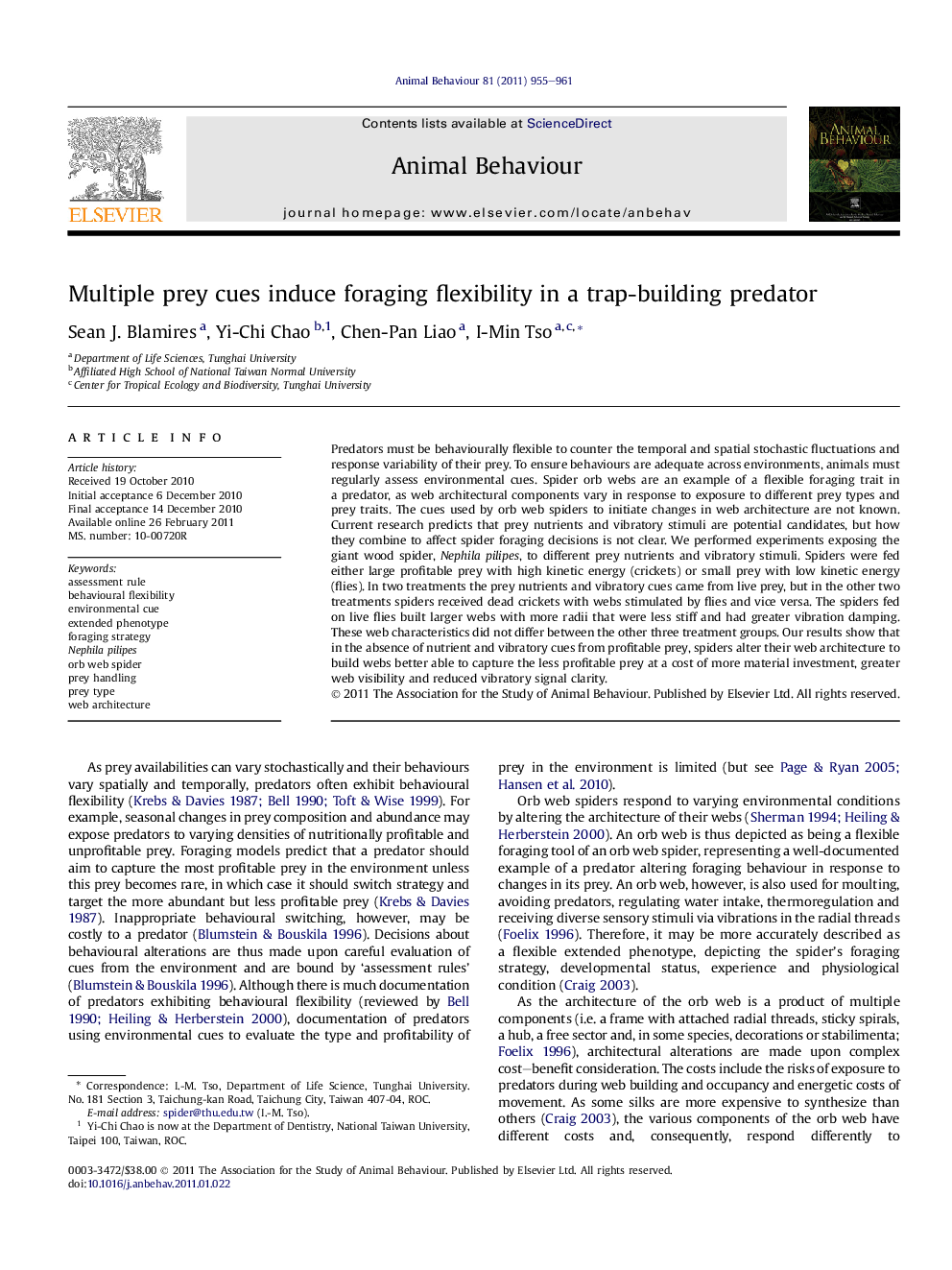| کد مقاله | کد نشریه | سال انتشار | مقاله انگلیسی | نسخه تمام متن |
|---|---|---|---|---|
| 2417052 | 1104306 | 2011 | 7 صفحه PDF | دانلود رایگان |

Predators must be behaviourally flexible to counter the temporal and spatial stochastic fluctuations and response variability of their prey. To ensure behaviours are adequate across environments, animals must regularly assess environmental cues. Spider orb webs are an example of a flexible foraging trait in a predator, as web architectural components vary in response to exposure to different prey types and prey traits. The cues used by orb web spiders to initiate changes in web architecture are not known. Current research predicts that prey nutrients and vibratory stimuli are potential candidates, but how they combine to affect spider foraging decisions is not clear. We performed experiments exposing the giant wood spider, Nephila pilipes, to different prey nutrients and vibratory stimuli. Spiders were fed either large profitable prey with high kinetic energy (crickets) or small prey with low kinetic energy (flies). In two treatments the prey nutrients and vibratory cues came from live prey, but in the other two treatments spiders received dead crickets with webs stimulated by flies and vice versa. The spiders fed on live flies built larger webs with more radii that were less stiff and had greater vibration damping. These web characteristics did not differ between the other three treatment groups. Our results show that in the absence of nutrient and vibratory cues from profitable prey, spiders alter their web architecture to build webs better able to capture the less profitable prey at a cost of more material investment, greater web visibility and reduced vibratory signal clarity.
Journal: Animal Behaviour - Volume 81, Issue 5, May 2011, Pages 955–961